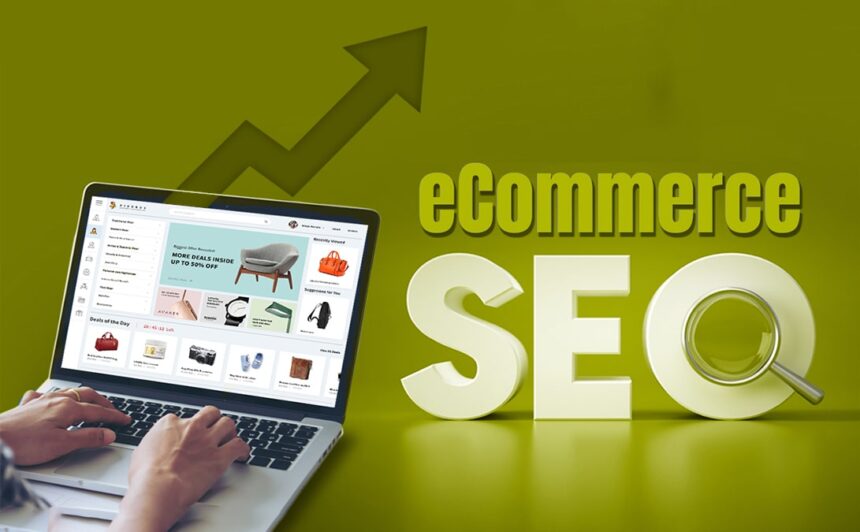In the digital age, where competition among online retailers is at an all-time high effective e-commerce SEO has become indispensable. It’s not just about being online—it’s about being discoverable. Search Engine Optimization (SEO) for e-commerce ensures that your products appear when potential buyers are searching. Done correctly, it improves rankings, attracts organic traffic, and increases conversion rates—all without the hefty cost of paid advertising.
This guide outlines the modern e-commerce SEO strategies that matter most, and how you can implement them to build a strong online presence.
Understanding E-commerce SEO
Unlike standard website SEO e-commerce SEO involves optimizing hundreds or even thousands of product and category pages. It must address unique challenges like duplicate content, faceted navigation and ever-changing inventory. The goal is simple: make sure your product pages are search engine-friendly and your content is valuable and relevant to shoppers.
Step-by-Step E-commerce SEO Strategy
1. Conduct E-commerce Specific Keyword Research
Your SEO success starts with identifying what your customers are searching for.
How to do it:
- Focus on transactional keywords (e.g., “buy leather jackets online”).
- Use Amazon autocomplete and Google’s People Also Ask sections for ideas.
- Identify long-tail keywords that reflect purchase intent.
- Tools: Ubersuggest, SEMrush, KeywordTool.io, Ahrefs.
💡 Pro tip: Target product-focused keywords rather than generic informational terms.
2. Optimize Site Structure for Scalability
A well-structured website improves both usability and crawlability.
Best practices:
- Create a hierarchical site structure: Homepage > Category > Subcategory > Product.
- Use search-friendly URLs: e.g., www.store.com/shoes/mens/running-shoes.
- Implement breadcrumb navigation to aid user orientation.
This clarity helps both users and search engines understand your website hierarchy.
3. Enhance Product Page SEO
Product pages are the heart of your e-commerce store. Each page should be optimized for both search intent and user experience.
Key elements to optimize:
- Product titles: Use exact match keywords.
- Unique descriptions: Avoid manufacturer content.
- Alt text for images: Important for image search and accessibility.
- Structured data (Schema.org): Helps Google display rich results like star ratings or price.
Don’t forget to write persuasive product copy that not only ranks but also converts.
4. Improve Technical SEO
Technical SEO ensures your e-commerce site is properly indexed and free from performance issues.
Checklist:
- Mobile-friendly design: With over 60% of traffic on mobile, responsiveness is non-negotiable.
- Fast loading speed: Compress images, use a CDN, and implement lazy loading.
- Canonical tags: Avoid duplicate content from similar product variants.
- XML sitemap: Submit to Google Search Console.
- SSL certificate: HTTPS is essential for both security and rankings.
Technical SEO forms the backbone of your site’s SEO performance.
5. Build Internal Linking
Internal links distribute page authority and help search engines understand the relationship between your pages.
Where to use them:
- Link from blog content to relevant product pages.
- Cross-link related products (e.g., “You may also like…”).
- Use descriptive anchor texts like “wireless earbuds under $100” instead of “click here”.
Internal linking also keeps users engaged longer on your site—good for SEO metrics.
6. Leverage User-Generated Content
Content from customers—like reviews, testimonials, and Q&A—boosts trust and SEO.
Benefits:
- Fresh content regularly updated.
- Naturally includes keywords.
- Encourages more interaction on the page.
Make it easy for customers to leave reviews and display them prominently on your product pages.
7. Create Value-Driven Content
A blog is not just for storytelling—it’s a key SEO tool.
Content ideas:
- Buying guides (e.g., “How to Choose the Right Laptop Bag”).
- Product comparisons (e.g., “Brand A vs Brand B: Which Is Better?”).
- Seasonal posts (e.g., “Top Summer Essentials 2025”).
Use internal links to direct readers to product pages and improve time-on-site.
8. Earn High-Quality Backlinks
Backlinks are votes of confidence from other websites.
White-hat methods:
- Partner with influencers or bloggers for product reviews.
- Create shareable content like infographics and data reports.
- List products on niche directories or forums.
Avoid black-hat link schemes. Instead focus on building authority through genuine relationships and valuable content.
9. Focus on Conversion Optimization
Driving traffic is only half the job. Your site must convert visitors into customers.
Tips:
- Add clear call-to-action buttons (“Add to Cart,” “Buy Now”).
- Include trust signals: return policy, secure checkout badges, and customer testimonials.
- Minimize friction in the checkout process: allow guest checkouts, reduce form fields.
SEO and conversion rate optimization (CRO) go hand-in-hand for long-term e-commerce success.
10. Track and Analyze Your SEO Performance
Without monitoring, you won’t know what’s working.
Important KPIs:
- Organic traffic (Google Analytics)
- Keyword rankings (Ahrefs, SEMrush)
- Bounce rate and dwell time
- Conversion rate from organic traffic
- Revenue generated from SEO efforts
Make SEO a continuous process: audit, optimize, and improve monthly.
Conclusion
Effective e-commerce SEO is more than just a checklist—it’s an ongoing strategy that combines technical precision, user-centric design and content that aligns with buyer intent. From conducting detailed keyword research to optimizing product pages strengthening site architecture and delivering a flawless shopping experience, every piece contributes to your store’s visibility and profitability.
The digital shelf is crowded, but with the right SEO foundation your store can rise above the noise. Remember SEO is not a one-time task—it’s a long-term investment that pays dividends by driving qualified traffic reducing customer acquisition costs and building sustainable brand equity.




